#Juan Martí
Text
Exposición "Un poco de mí", Colectiva

View On WordPress
#2023#Adigio Benitez#Adonis Flores#Amelia Peláez#Belkis Ayón#Benito Ortiz#Biblioteca Nacional José Martí#Eduardo Abela#Eduardo Roca (Choco)#Ernesto Fernández Nogueras#Ever Fonseca#Flora Fong#José Villa Soberón#Juan Moreira#Lázaro Saavedra#Lesbia Vent Dumois#Liudmila & Nelson#Manuel Mendive#Mariano Rodríguez#Muestra Colectiva#Nelson Domínguez#Osneldo García#Pedro Pablo Oliva#Raúl Corrales#Rafael Zarza#Reinerio Tamayo#Rene de la Nuez#Roberto Fabelo#Ruperto Jay Matamoros#Sandra Ramos
0 notes
Text
Manel Camp & Big Band Conservatori Illes Balears (Auditori Conservatori Illes Balears, Palma de Mallorca. 2022-06-16) Por José Luis Luna Rocafort [INSTANTZZ AKA Galería fotográfica AKA Fotoblog de jazz, impro… y algo más]
Manel Camp & Big Band Conservatori Illes Balears (Auditori Conservatori Illes Balears, Palma de Mallorca. 2022-06-16) Por José Luis Luna Rocafort [INSTANTZZ AKA Galería fotográfica AKA Fotoblog de jazz, impro… y algo más]
Fecha: Jueves, 16 de junio de 2022. 20:00h.
Lugar: Auditori Conservatori Illes Balears. Palma de Mallorca
Grupo:
Manel Camp & Big Band Conservatori Illes Balears
Manel Camp: dirección, piano
Xisca Oliver, Sergi Sellès, Pau Vallbona: piano
Esteve Huguet, Jaume Rosselló, Martí Genestar, Goran Levi: guitarra eléctrica
Llúcia Gomila: contrabajo
Josep Servera, Marius Koopmann: batería
Miquel Ramon,…

View On WordPress
#Aina Tramulles#Amparo Chust#Cecilia Giménez#Esteve Huguet#Gabriel Saitto#Genís Navarro#Goran Levi#Jaime de la Cruz#Jaume Rosselló#Jérôme Grin#José Luis Luna Rocafort#Josep Servera#Juan José Gallardo#Lleonard Martínez#Llucia Gomila#Manel Camp#Manel Camp & Big Band Conservatori Illes Balears#Marius Koopmann#Martí Genestar#Miquel Àngel Rigo#Miquel Gayà#Miquel Ramon#Pau Vallbona#Pep Garau#Pere Miquel Molina#Sergi Sellés#Sergio Vicente Aranguren#Sinead Cormican#Xema Borrás#Xisca Oliver
0 notes
Text
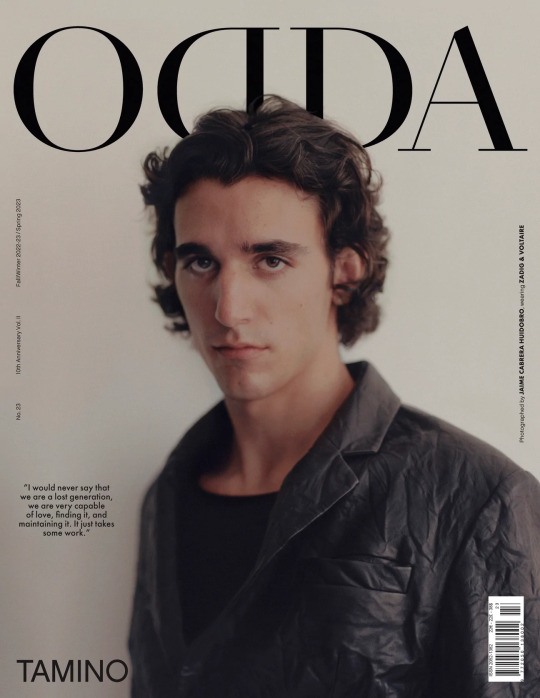

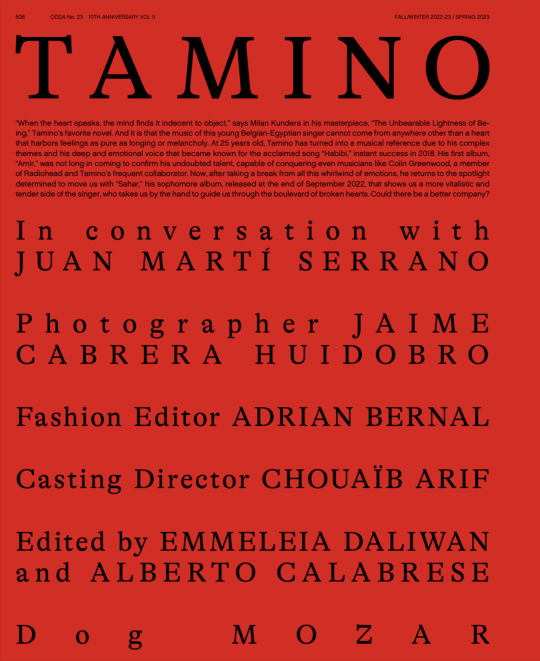
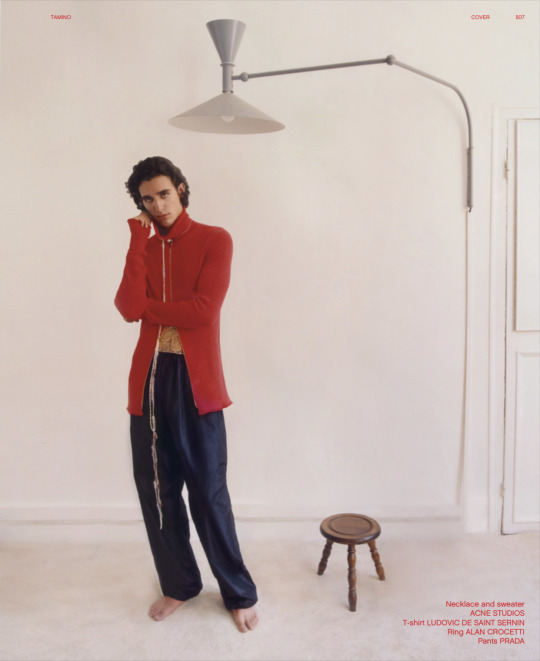


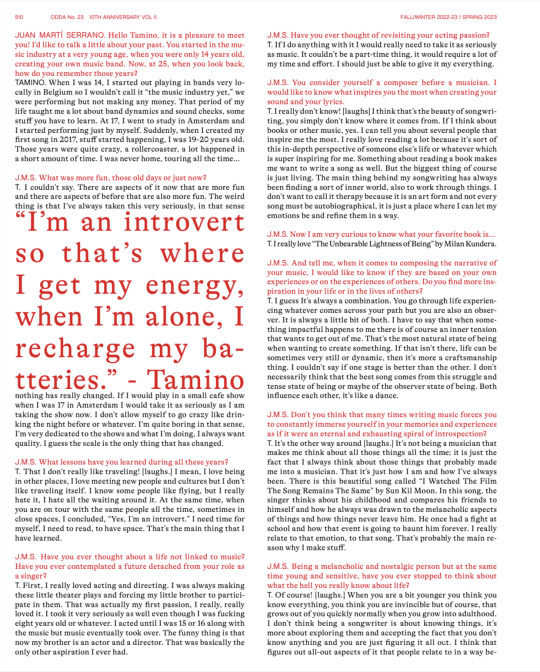
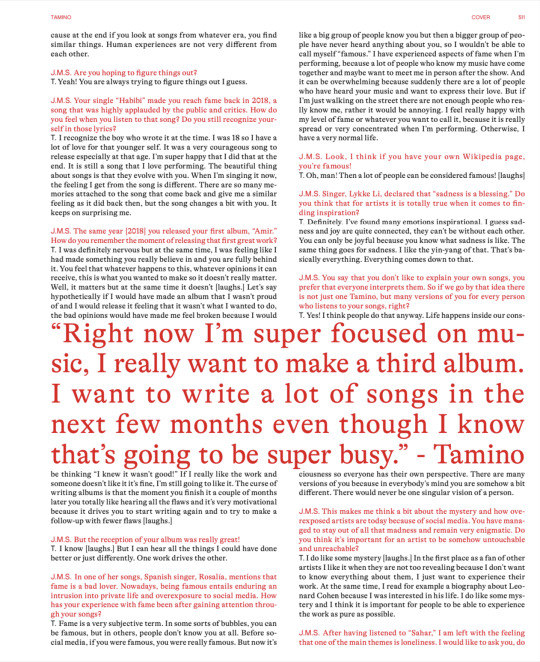



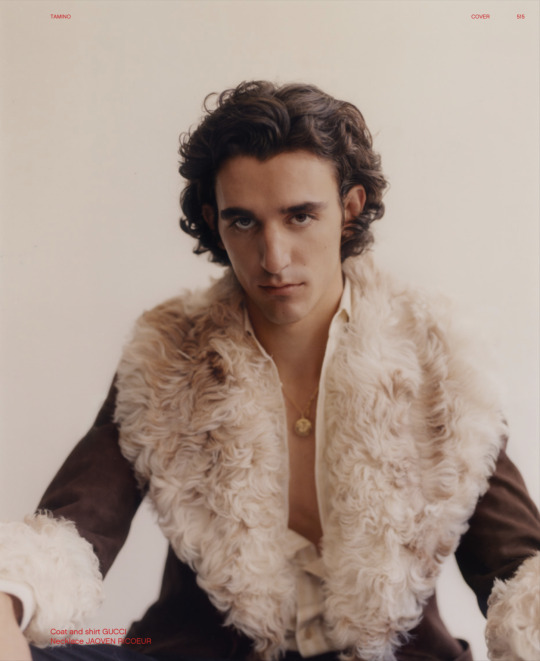








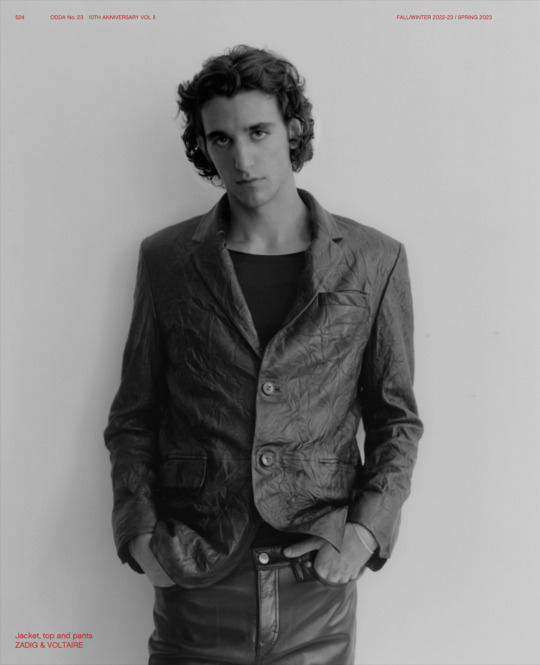

— Tamino for ODDA Magazine, No. 23 / Fall/Winter 2022-23 / Spring 2023 (x)
TAMINO
"When the heart speaks, the mind finds it indecent to object," says Milan Kundera in his masterpiece, "The Unbearable Lightness of Being," Tamino's favorite novel. And it is that the music of this young Belgian-Egyptian singer cannot come from anywhere other than a heart that harbors feelings as pure as longing or melancholy. At 25 years old, Tamino has turned into a musical reference due to his complex themes and his deep and emotional voice that became known for the acclaimed song "Habibi," instant success in 2018. His first album, "Amir," was not long in coming to confirm his undoubted talent, capable of conquering even musicians like Colin Greenwood, a member of Radiohead and Tamino's frequent collaborator. Now, after taking a break from all this whirlwind of emotions, he returns to the spotlight determined to move us with "Sahar," his sophomore album, released at the end of September 2022, that shows us a more vitalistic and tender side of the singer, who takes us by the hand to guide us through the boulevard of broken hearts. Could there be a better company?
In conversation with JUAN MARTÍ SERRANO
Photographer JAIME CABRERA HUIDOBRO
Fashion Editor ADRIAN BERNAL
Casting Director CHOUAÏB ARIF
Edited by EMMELEIA DALIWAN and ALBERTO CALABRESE
Dog MOZAR
JUAN MARTI SERRANO. Hello Tamino, it is a pleasure to meet you! I'd like to talk a little about your past. You started in the music industry at a very young age, when you were only 14 years old, creating your own music band. Now, at 25, when you look back, how do you remember those years?
TAMINO. When I was 14, I started out playing in bands very locally in Belgium so I wouldn't call it "the music industry yet," we were performing but not making any money. That period of my life taught me a lot about band dynamics and sound checks, some stuff you have to learn. At 17, I went to study in Amsterdam and I started performing just by myself. Suddenly, when I created my first song in 2017, stuff started happening, I was 19-20 years old. Those years were quite crazy, a rollercoaster, a lot happened in a short amount of time. I was never home, touring all the time...
J.M.S. What was more fun, those old days or just now?
T. I couldn't say. There are aspects of it now that are more fun and there are aspects of before that are also more fun. The weird thing is that I've always taken this very seriously, in that sense nothing has really changed. If I would play in a small cafe show when I was 17 in Amsterdam I would take it as seriously as I am taking the show now. I don’t allow myself to go crazy like drinking the night before or whatever. I'm quite boring in that sense, I'm very dedicated to the shows and what I’m doing, I always want quality. I guess the scale is the only thing that has changed.
"I'm an introvert so that's where I get my energy, when I'm alone, I recharge my batteries." - Tamino
J.M.S. What lessons have you learned during all these years?
T. That I don’t really like traveling! [laughs.] I mean, I love being in other places, I love meeting new people and cultures but I don't like traveling itself. I know some people like flying, but I really hate it, I hate all the waiting around it. At the same time, when you are on tour with the same people all the time, sometimes in close spaces, I concluded, "Yes, I’m an introvert." I need time for myself, I need to read, to have space. That's the main thing that I have learned.
J.M.S. Have you ever thought about a life not linked to music? Have you ever contemplated a future detached from your role as a singer?
T. First, I really loved acting and directing. I was always making these little theater plays and forcing my little brother to participate in them. That was actually my first passion, I really, really loved it. I took it very seriously as well even though I was fucking eight years old or whatever. I acted until I was 15 or 16 along with the music but music eventually took over. The funny thing is that now my brother is an actor and a director. That was basically the only other aspiration I ever had.
J.M.S. Have you ever thought of revisiting your acting passion?
T. If I do anything with it I would really need to take it as seriously as music. It couldn't be a part-time thing, it would require a lot of my time and effort. I should just be able to give it my everything.
J.M.S. You consider yourself a composer before a musician. I would like to know what inspires you the most when creating your sound and your lyrics.
T. I really don’t know! [laughs] I think that’s the beauty of songwriting, you simply don’t know where it comes from. If I think about books or other music, yes. I can tell you about several people that inspire me the most. I really love reading a lot because it’s sort of this in-depth perspective of someone else’s life or whatever which is super inspiring for me. Something about reading a book makes me want to write a song as well. But the biggest thing of course is just living. The main thing behind my songwriting has always been finding a sort of inner world, also to work through things. I don't want to call it therapy because it is an art form and not every song must be autobiographical, it is just a place where I can let my emotions be and refine them in a way.
J.M.S. Now I am very curious to know what your favorite book is...
T. I really love "The Unbearable Lightness of Being" by Milan Kundera.
J.M.S. And tell me, when it comes to composing the narrative of your music, I would like to know if they are based on your own experiences or on the experiences of others. Do you find more inspiration in your life or in the lives of others?
T. I guess it's always a combination. You go through life experiencing whatever comes across your path but you are also an observer. It is always a little bit of both. I have to say that when something impactful happens to me there is of course an inner tension that wants to get out of me. That's the most natural state of being when wanting to create something. If that isn't there, life can be sometimes very still or dynamic, then it’s more a craftsmanship thing. I couldn't say if one stage is better than the other. I don't necessarily think that the best song comes from this struggle and tense state of being or maybe of the observer state of being. Both influence each other, it's like a dance.
J.M.S. Don't you think that many times writing music forces you to constantly immerse yourself in your memories and experiences as if it were an eternal and exhausting spiral of introspection?
T. It's the other way around [laughs.] It's not being a musician that makes me think about all those things all the time; it is just the fact that I always think about those things that probably made me into a musician. That it's just how I am and how I've always been. There is this beautiful song called "I Watched The Film The Song Remains The Same" by Sun Kil Moon. In this song, the singer thinks about his childhood and compares his friends to himself and how he always was drawn to the melancholic aspects of things and how things never leave him. He once had a fight at school and how that event is going to haunt him forever. I really relate to that emotion, to that song. That's probably the main reason why I make stuff.
J.M.S. Being a melancholic and nostalgic person but at the same time young and sensitive, have you ever stopped to think about what the hell you really know about life?
T. Of course! [laughs.] When you are a bit younger you think you know everything, you think you are invincible but of course, that grows out of you quickly normally when you grow into adulthood. I don't think being a songwriter is about knowing things, it’s more about exploring them and accepting the fact that you don’t know anything and you are just figuring it all out. I think that figures out all-out aspects of it that people relate to in a way because at the end if you look at songs from whatever era, you find similar things. Human experiences are not very different from each other.
J.M.S. Are you hoping to figure things out?
T. Yeah! You are always trying to figure things out I guess.
J.M.S. Your single "Habibi" made you reach fame back in 2018, a song that was highly applauded by the public and critics. How do you feel when you listen to that song? Do you still recognize yourself in those lyrics?
T. I recognize the boy who wrote it at the time. I was 18 so I have a lot of love for that younger self. It was a very courageous song to release especially at that age. I'm super happy that I did that at the end. It is still a song that I love performing. The beautiful thing about songs is that they evolve with you. When I'm singing it now,the feeling I get from the song is different. There are so many memories attached to the song that come back and give me a similar feeling as it did back then, but the song changes a bit with you. It keeps on surprising me.
J.M.S. The same year [2018] you released your first album, "Amir." How do you remember the moment of releasing that first great work?
T. I was definitely nervous but at the same time, I was feeling like I had made something you really believe in and you are fully behind it. You feel that whatever happens to this, whatever opinions it can receive, this is what you wanted to make so it doesn't really matter. Well, it matters but at the same time it doesn't [laughs.] Let’s say hypothetically if I would have made an album that I wasn't proud of and I would release it feeling that it wasn't what I wanted to do, the bad opinions would have made me feel broken because I would be thinking "I knew it wasn’t good!" If I really like the work and someone doesn't like it it’s fine, I'm still going to like it. The curse of writing albums is that the moment you finish it a couple of months later you totally like hearing all the flaws and it’s very motivational because it drives you to start writing again and to try to make a follow-up with fewer flaws [laughs.]
"Right now I'm super focused on music, I really want to make a third album. I want to write a lot of songs in the next few months even though I know that's going to be super busy." - Tamino
J.M.S. But the reception of your album was really great!
T. I know [laughs.] But I can hear all the things I could have done better or just differently. One work drives the other.
J.M.S. In one of her songs, Spanish singer, Rosalia, mentions that fame is a bad lover. Nowadays, being famous entails enduring an intrusion into private life and overexposure to social media. How has your experience with fame been after gaining attention through your songs?
T. Fame is a very subjective term. In some sorts of bubbles, you can be famous, but in others, people don’t know you at all. Before social media, if you were famous, you were really famous. But now it’s like a big group of people know you but then a bigger group of people have never heard anything about you, so I wouldn't be able to call myself “famous.” I have experienced aspects of fame when I’m performing, because a lot of people who know my music have come together and maybe want to meet me in person after the show. And it can be overwhelming because suddenly there are a lot of people who have heard your music and want to express their love. But if I’m just walking on the street there are not enough people who really know me, rather it would be annoying. I feel really happy with my level of fame or whatever you want to call it, because it is really spread or very concentrated when I’m performing. Otherwise, I have a very normal life.
J.M.S. Look, I think if you have your own Wikipedia page, you're famous!
T. Oh, man! Then a lot of people can be considered famous! [laughs]
J.M.S. Singer, Lykke Li, declared that “sadness is a blessing.” Do you think that for artists it is totally true when it comes to finding inspiration?
T. Definitely. I've found many emotions inspirational. I guess sadness and joy are quite connected, they can’t be without each other. You can only be joyful because you know what sadness is like. The same thing goes for sadness. I like the yin-yang of that. That's basically everything. Everything comes down to that.
J.M.S. You say that you don’t like to explain your own songs, you prefer that everyone interprets them. So if we go by that idea there is not just one Tamino, but many versions of you for every person who listens to your songs, right?
T. Yes! I think people do that anyway. Life happens inside our consciousness so everyone has their own perspective. There are many versions of you because in everybody's mind you are somehow a bit different. There would never be one singular vision of a person.
J.M.S. This makes me think a bit about the mystery and how overexposed artists are today because of social media. You have managed to stay out of all that madness and remain very enigmatic. Do you think it’s important for an artist to be somehow untouchable and unreachable?
T. I do like some mystery [laughs.] In the first place as a fan of other artists I like it when they are not too revealing because I don’t want to know everything about them, I just want to experience their work. At the same time, I read for example a biography about Leonard Cohen because I was interested in his life. I do like some mystery and I think it is important for people to be able to experience the work as pure as possible.
J.M.S. After having listened to “Sahar,” I am left with the feeling that one of the main themes is loneliness. I would like to ask you, do you usually feel lonely or do you consider yourself a solitary person? Or otherwise, have you learned how to embrace loneliness and be comfortable with it?
T. Rather a solitary person than lonely. I don’t really feel lonely because I have really good friends. Loneliness is more about a state of being that you can feel from time to time and when you feel it you can dwell in it or call a friend and hang out. I do that when I feel lonely but I'm also very ok with being alone because it’s the only way I'm able to create. I’m an introvert so that’s where I get my energy, when I'm alone, I recharge my batteries.
J.M.S. One of my favorite songs on the album, “The Longing,” talks about letting go. Do you think you are someone who holds on to people or even memories or is it easy for you to let go?
T. I'm still figuring that out. I don’t know yet if I’m a super sentimental person who is very nostalgic and dwells in the past or someone who is quite always moving forward. Maybe I’m someone in between.
J.M.S. In “Sahar” through songs like “The First Disciple,” you talk about love and desire. At 25 years old, do you think our generation correctly understands what love is about?
T. I wouldn't be able to say what love is about, I don’t even know. That's a difficult question to answer. There is something about the whole dating app era that is a bit weird but at the same time, I have a lot of friends who found love, even myself. I would never say that we are a lost generation, we are very capable of love, finding it, and maintaining it. It just takes some work.
J.M.S. In both records, “Sahar” and “Amir,” you can perceive that the great influence of bands like Radiohead is prominent. Actually, a component of the band participated in a single of your first album, “Indigo Night.” I would like to know your personal and musical connection with the band led by Thom Yorke.
T. Colin Greenwood, the bassist of Radiohead, was the one who played with us in that song, then we started touring together a bit, and then I asked him to play again in the new album so he plays in seven songs! We spent a lot of time in the studio and we already did a big concert in Istanbul in June. He is super.
“I guess sadness and joy are quite connected, they can’t be without each other. You can only be joyful because you know what sadness is like. The same thing goes for sadness.” - Tamino
J.M.S. Ok, we spoke about music, your “personality” as an artist… Tell us more about who Tamino is.
T. Well I can tell you that my favorite movie is “Phantom Thread.”
J.M.S. That movie in which the fashion designer lets himself be poisoned by his girlfriend in a kind of psycho-emotional game?
T. Yes! Love that movie! When I was a kid my favorite movies were “The Lord of the Rings” and they still sort of are.
J.M.S. Love “Lord of the Rings”, so homoerotic!
T. Which character makes you think those movies are homoerotic?
J.M.S. Most of them. All those sweaty and dirty men sleeping together in those dark and mysterious forests with voyeuristic trees with eyes spying on them...
T. Maybe I should rewatch them!
J.M.S. And Frodo and Sam, of course! Something between them was going on!
T. Oh yes! I can understand that!
J.M.S. And favorite musician?
T. So many! Anouar Brahem’s “Blue Maqams” has really inspired me for this album. The typical ones I have mentioned so many times like Leonard Cohen and Bob Dylan, Fairuz... I think when I really like something I always go back to it, that’s probably something that is very present in my personality. I have loyalty to those kinds of things. I rarely have anything like this new thing that I’m super into. I like a lot of things but I don’t love a lot of things. If I love something, it is with me forever in a way. There are a couple of books and movies that I would always go back to and I probably always talk about.
J.M.S. Any TV shows?
T. “Better Call Saul!” Just brilliant!
J.M.S. Let's talk about fashion, an industry that has been seduced by you since we all got to discover your music. Some houses such as Missoni included you in their advertising campaign and many others requested your presence in their shows. What is the meaning of fashion for Tamino and how do you go through your style?
T. I like just wearing clothes that make me feel I would say “I like myself,” but it depends on the day. Sometimes I like to wear a suit, sometimes I like to wear a t-shirt. What I'm wearing needs to make me feel aligned with the mood I'm in because then I feel that my interactions with people are better. I think that wearing what makes you feel comfortable that day makes you more connected to yourself.
J.M.S. Do you pay attention to the clothes you wear?
T. I definitely pay attention to what I wear. I love well-made clothes and good fabrics and designs. I really appreciate the quality. There are some brands that I'm really into like Yohji Yamamoto.
J.M.S. Would you like to participate actively and frequently in the world of fashion?
T. It’s funny because it was never an ambition when I was younger. It was something that just happened. It’s super cool but I’m very sober in fashion. It’s not like I’ve ever had a deep desire to make it in fashion, if something comes along and feels right like I really want to do it, then for sure!
J.M.S. Now that you have a well-grounded career in music and the support of specialized critics and your fans, what is the next step for Tamino?
T. First, we have the tour coming so I hope I will be able to enjoy it more this time, to be more at the moment. Right now I’m super focused on music, I really want to make a third album. I want to write a lot of songs in the next few months even though I know that’s going to be super busy. I want to spend some time in New York or anywhere else that can feel inspired. It’s time for something new.
Grooming by BASTIEN ZORZETTO using REDKEN
Set Designer PIERGIO GEREMIA
Retoucher ALBERTO MARO
Fashion Assistant MARTIN BARRÉ
Special Thanks to JAOVEN RICOEUR, CLAUDIA MATE, ANDREW SMITH and EMMA BOESCH at VIRGIN RECORDS
#tamino#tamino amir#odda magazine#article#interview#english#2022#with photoshoot#original text#eyestrain#<- just in case#finally got this :)#i caved and spent real money on it
144 notes
·
View notes
Note
I love el salvador because its proof that you can literally just disregard left wing ideology completely, do the exact opposite of what (((they))) say we can't/arent allowed to do, and the end result is objective improvement lol based president bukakke is /ourguy/
lol
>>Despite Bukele presenting his administration as “populist” he is anything but a political outsider or a champion of “the people.” After getting kicked out of the then-ruling Farabundo Martí National Liberation Front (FMLN) for allegedly assaulting a female party official, Bukele, a former advertising executive, joined the Grand Alliance for National Unity (GANA) whose founding members came from the aforementioned Nationalist Republican Alliance (ARENA). Furthermore, Bukele’s rise to power took place during an election in which nearly 50% of eligible Salvadoran voters abstained. It’s even possible that Bukele was appointed in response to the FMLN government’s friendlier relationship with China. For example, in exchange for breaking ties with Taiwan and recognizing Beijing as the official capitol of China, FLMN received $150 million and a donation of 3,000 tons of rice from the Chinese Communist Party. Likewise, during the Trump administration’s 2019 attempt to oust Venezuelan president Nicolas Maduro on behalf of the neoliberal reactionary Juan Guaido, the FMLN took the side of the Chavistas.
In America, Bukele is best known for establishing Bitcoin as Salvadoran legal tender alongside the US dollar. Cryptobros like to portray this as an attempt by a “based” technocrat unpersuaded by “ideology” to get his nation off of fiat currency and away from the control of central banks. This narrative is a total inversion of the truth; In 2020 Bukele sent 40 soldiers into the Legislative Assembly building and forced opposition politicians at gunpoint to approve a loan request of $109 million from the American government for his “Territorial Control Plan.” This plan, using COVID-19 as a pretext, deployed thousands of military personnel to work alongside local police in establishing martial law throughout El Salvador. Bukele’s government insists this led not only to a successful quarantine but a significant reduction in homicides by organized crime. However, the Territorial Control Plan relies on alliances with Salvador’s gangs, as a report by El Faro exposed. “The pandemic was a blessing for Bukele,” Carlos López Bernal, a professor of history at the University of El Salvador, told The Guardian. “He presented an apocalyptic scenario to which the only solution, supposedly, was to give the president everything he asked for. More money and more power.”
In 2021, Bukele’s party “won” a supermajority in El Salvador’s congress, supposedly with 65% of the vote. He then fired five Salvadoran Supreme Court Justices and the attorney general before the Legislative Assembly voted to accept Bitcoin as legal tender. This decision was influenced by Bukele’s close relationship to Strike CEO Jack Mallers, the descendant of Chicago finance royalty and a member of Forbes 30 under 30. According to Slate: “Bukele’s government rolled out a digital crypto wallet in app form, called Chivo (Salvadoran slang for cool), which came preloaded with $30 of Bitcoin to encourage adoption. Many who downloaded it found it confusing and buggy, or that their $30 had already been stolen by identity thieves. A study by economists at the University of Chicago, Penn State and Yale found that of those who managed to access it, most cashed out their $30 and didn’t use Chivo again.”
Towards the start of May, cryptocurrency experienced its worst crash yet. This ongoing crash has already wiped out $400 billion in market capitalization and bankrupted innumerable investors. As Slate notes, “El Salvador is on the verge of defaulting on its debts, which amount to close to 100 percent of its gross domestic product. This is exacerbated by the loss of value of the country’s Bitcoin holdings, which Bukele bragged he would trade with public funds on his phone while in the bathroom. As of now, he has personally cost the Treasury about $40 million—an amount equal to its next foreign debt payment, due to bondholders in June.”
Just before the epic crypto crash, Bukele unveiled plans for a city, “funded by the sale of a Bitcoin bond and powered by geothermal energy from the nearby Conchagua volcano.” Now, the country’s bonds are trading at 40% of their original value. But like any good con artist, cult leader, or multi-level marketing guru, Bukele has doubled down on his Bitcoin “gamble.” In the midst of the crypto crash, El Salvador hosted a “financial inclusion conference” attended by “44 central bankers from developing countries around the world.” This conference was organized by the Alliance for Financial Inclusion, formed in 2008 by central bankers in Mexico, Kenya, the Philippines, Indonesia and Thailand in “close collaboration” with the Bill and Melinda Gates Foundation. In 2013, Bill Gates spoke at a meeting hosted by the United Nations General Assembly to tout the merits of “digital financial inclusion” via digital payment systems. The invite reads:
“Today 2.5 billion adults are excluded from the formal financial services sector. Yet governments, the development community and the private sector make billions of dollars in cash payments to people in emerging economies, many of them poor and financially excluded. Shifting these salaries, pensions, social welfare stipends and emergency relief payments from cash to electronic has the potential to improve the livelihoods of low-income people by advancing financial inclusion and helping people save.
During the upcoming United Nations General Assembly, UNDP, UNCDF and the Better Than Cash Alliance are hosting an event on how partnerships between governments, private sector and development organizations are helping to promote inclusive growth. It will focus on how digital payments can catalyze financial inclusion, and as a result, can be a driver of inclusive growth and development.”
In January 2021 the Bank of International Settlements issued a report stating, “Most central banks are exploring central bank digital currencies (CBDCs), and their work continues apace amid the Covid-19 pandemic. As a whole, central banks are moving into more advanced stages of CBDC engagement, progressing from conceptual research to practical experimentation.” Since 2017, “the share of central banks actively engaging in some form of CBDC work grew by about one third and now stands at 86%.” The BIS report found that 56 central banks are now researching or developing some form of digital currency.
During the early stages of the pandemic in 2020 programmers well versed in COBOL, a 40 year old programming language, were in high demand. This demand mainly came from state governments, who still use COBOL to dispense unemployment benefits. “Literally, we have systems that are 40-plus-years-old,” New Jersey governor Chris Murphy told CNBC. “There’ll be lots of postmortems. and one of them on our list will be, how did we get here where we literally needed COBOL programmers?” Murphy’s concerns were echoed by Kansas governor Laura Kelly: “So many of our Departments of Labor across the country are still on the COBOL system; you know very, very old technology.” Connecticut, California, New York, and Pennsylvania “still rely on decades-old mainframe systems based on the COBOL language as well.”
If all of this still sounds banal or benign to you, consider the following:
PRISM, the massive NSA surveillance machine “exposed” by Islamaphobic Ayn Rand fanboy and descendant of numerous lifelong feds Edward Snowden, is the direct descendant of PROMIS, a tracking software developed by a “former” NSA fed working in the private sector through his firm Inslaw. Inslaw originally developed PROMIS to help the Department of Justice and local law enforcement agencies across America “update” their prehistoric filing systems in the mid-1980s. PROMIS was later stolen by Mossad spies and infamously distributed by Robert Maxwell, father of Ghislaine Maxwell, before making its way back to its homeland. In the meantime, the same NSA that was building PRISM and had produced PROMIS was working on the hash algorithm that made Bitcoin possible.
------
Covid Imperialism, Crypto Colonialism, and the Real “Great Reset” – Beyond_Lies_The_Wub (wordpress.com)
12 notes
·
View notes
Text
“The Cult of Personality in the Spanish Revolution”
(Danny Evans, 2021):
In an article of January 1937[1], Ada Martí, one of the moving spirits behind the anarchist student organisation the FECL, criticised what she called ‘revolutionary fetishism’: the tendency to create icons out of revolutionary martyrs. Regardless of the ideology of the idol in question, such hero worship had no place in a revolution – at least one directed at freedom and equality rather than dictatorship. In the article, she noted in passing that Buenaventura Durruti would have been appalled at the sanctification to which he had been subjected since his death. Worse was to come.
Following his death, Durruti was used by the leadership of the Spanish anarchist movement to symbolise self-sacrifice and the subordination of the revolution to the war effort. An invented quote was attributed to him, ‘We renounce everything except victory’, and repeated endlessly by his former comrades and enemies alike.
The sanctification of Durruti served the leadership in two respects. First, it lodged the country’s most famous anarchist at the forefront of the Republic’s martyrs, thereby demonstrating the commitment of the movement to the war and to anti-fascist collaboration. Second, it worked as a disciplinary mechanism over the anarchist rank-and-file, suspicious of leadership but full of admiration for their fallen compañero.
One event in particular illustrates both of these purposes. At the beginning of July 1937, a major assembly of the Catalan FAI was held in the Casa CNT-FAI, the headquarters of the libertarian movement in Barcelona, to debate the organisation’s collaboration with the Republican state. The opening sessions were dominated by radicals who advocated breaking with the policy of collaboration. During its second session, proceedings were called to a halt so that the delegates could attend the unveiling of a plaque dedicated to Durruti. In order to attend, it was only necessary to head to the balcony and windows of the meeting hall, as the plaque was unveiled in front of the Casa CNT-FAI, as can be seen in the photos of Pérez de Rozas in the Arxiu Fotogràfic de Barcelona.
There, the delegates were confronted by an enormous multitude who had heeded the call in that morning’s Solidaridad Obrera to appear ‘as one man’ in memory of Durruti. They were addressed from a raised platform to the side of the building on which stood, alongside notable anarchists such as Juan García Oliver and Ricardo Sanz, the chief of police Ricardo Burillo, then overseeing operations against revolutionary centres, union premises and libraries. After the ceremony, the big names of Spanish anarchism who had shown up to the event entered the meeting hall, where they proceeded to browbeat the FAI delegates into backtracking on their radical agenda.
The crowd that had gathered represented the greatest show of anarchist strength between the May days of 1937 and the end of the war, but also symbolised the shift from ‘mass participation to mass mobilisation’ described in reference to the Russian revolution by Simon Pirani[2]: ‘Mass mobilization, in which the party defines the parameters and aims of a campaign, calls on the mass of people to support it, and judges mass consciousness by levels of participation, stands clearly in the “socialism-from-above” tradition. It fences off the mass from decision-making, and assigns it a limited role, undertaking activity guided by decision-makers in the party.’ When the proceedings came to an end, the crowd were urged to leave in an orderly fashion without making any kind of demonstration, which the following day’s Solidaridad Obrera congratulated them on doing.
In such a context, we can see that it was a mistake for an important radical anarchist grouping to call itself the Friends of Durruti (FOD). On the one hand, the choice of name was intended to expose the CNT-FAI leadership’s falsification of Durruti’s politics and to affirm a revolutionary continuity with the militia column he had led and which many of the FOD had fought in. On the other, it was off-putting to those anarchists repelled by the cult of personality being constructed around the anarchist martyr. Furthermore, to do battle over the legacy of Durruti was tactically dubious when so many resources were being invested in constructing a pliable, national myth out of the obdurate internationalist anarchist. In an article at the end of May 1937 denouncing the FOD, the Madrid-based anarchist newspaper Castilla Libre affirmed that the grouping had been infiltrated by Communist Party provocateurs who falsely claimed to be disciples of the ‘people’s caudillo’. This frightening expression, mirroring the fascist propaganda describing Franco – who had not yet taken on this title formally – as a ‘caudillo’, would become increasingly visible in anarchist media, in a process described by Miquel Amorós in Durruti en el labarinto.
Although a contributor to the FOD’s newspaper, Ada Martí was right in perceiving the inherently anti-revolutionary, anti-libertarian nature of the cult of personality. Her warning is no less true today than it was in 1937: ‘Beware new idols!’
12 notes
·
View notes
Text


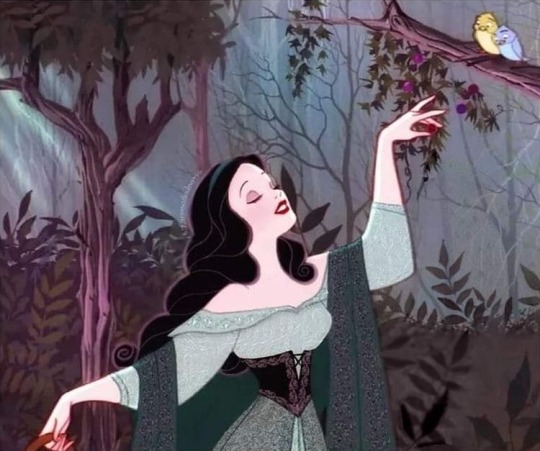
Reading List - Lista para Leer
Aves sin nido Clorinda Matto de Turner
Dom Casmurro Joaquim Maria Machado de Assis
Ariel José Enrique Rodó
El Moto Joaquin Garcia Monge
La amada inmóvil Amado Nervo
Desolación Gabriela Mistral
La señorita Etcétera Arqueles Vela
La vorágine José Eustasio Rivera
Doña Bárbara Rómulo Gallegos
Cuentos de Amor, de Locura y de Muerte Horacio Quiroga
Other selected works
Isabel Allende, “Dos palabras”
Anónimo, “Romance de la pérdida de Alhama”
Anónimo, Lazarillo de Tormes (Prólogo; Tratados 1, 2, 3, 7)
Gustavo Adolfo Bécquer, Rima LIII (“Volverán las oscuras golondrinas”)
Jorge Luis Borges, “Borges y yo”
Jorge Luis Borges, “El Sur”
Julia de Burgos, “A Julia de Burgos”
Miguel de Cervantes, Don Quijote (Primera parte, capítulos 1–5, 8 y 9; Segunda parte, capítulo 74)
Julio Cortázar, “La noche boca arriba”
Hernán Cortés, “Segunda carta de relación” (selecciones)
Sor Juana Inés de la Cruz, “Hombres necios que acusáis”
Rubén Darío, “A Roosevelt”
Don Juan Manuel, Conde Lucanor, Exemplo XXXV (“De lo que aconteció a un mozo que casó con una mujer muy fuerte y muy brava”)
Osvaldo Dragún, El hombre que se convirtió en perro
Carlos Fuentes, “Chac Mool”
Federico García Lorca, La casa de Bernarda Alba
Federico García Lorca, “Prendimiento de Antoñito el Camborio en el camino de Sevilla”
Gabriel García Márquez, “El ahogado más hermoso del mundo”
Gabriel García Márquez, “La siesta del martes”
Garcilaso de la Vega, Soneto XXIII (“En tanto que de rosa y azucena”)
Luis de Góngora, Soneto CLXVI (“Mientras por competir con tu cabello”)
Nicolás Guillén, “Balada de los dos abuelos”
José María Heredia, “En una tempestad”
Miguel León-Portilla, Visión de los vencidos (dos secciones: “Los presagios, según los informantes de Sahagún” y “Se ha perdido el pueblo mexica”)
Antonio Machado, “He andado muchos caminos”
José Martí, “Nuestra América”
Rosa Montero, “Como la vida misma”
Nancy Morejón, “Mujer negra”
Pablo Neruda, “Walking around”
Emilia Pardo Bazán, “Las medias rojas”
Francisco de Quevedo, Salmo XVII (“Miré los muros de la patria mía”)
Horacio Quiroga, “El hijo”
Tomás Rivera, . . . y no se lo tragó la tierra (dos capítulos: “... y no se lo tragó la tierra” y “La noche buena”)
Juan Rulfo, “No oyes ladrar los perros”
Alfonsina Storni, “Peso ancestral”
Tirso de Molina, El burlador de Sevilla y convidado de piedra
Sabine Ulibarrí, “Mi caballo mago”
Miguel de Unamuno, San Manuel Bueno, mártir

#lista para leer#catholic#feminine#reading list#Spanish reading list#spanish#reading#books to read#classic books
3 notes
·
View notes
Text




IMAGENES Y DATOS INTERESANTES DEL DIA 6 DE OCTUBRE DE 2023
Día Mundial de la Sonrisa, Día Internacional de la Geodiversidad, Día Mundial de la Parálisis Cerebral, Semana Internacional de la Crianza en Brazos, Año Internacional del Mijo y Año Internacional del Diálogo como Garantía de Paz.
Santa Enimia, Santa Fe, San Casto, San Emilio, San Saturnino, San Magno, San Braulio, Santa Brunilda y San Bruno.
Tal día como hoy en el año 1889: El inventor estadounidense Thomas Edison presenta el kinetoscopio, considerado el primer proyector de cine, en el que solo un espectador podía disfrutar de la experiencia.
En 1891: Se publican por primera vez Los Versos sencillos, en Nueva York, del poeta y político cubano José Martí.
En 1927: Se estrena la primera película de cine sonoro de la historia: El cantante de jazz, en Nueva York.
En 1948: Ocurre un terremoto de magnitud 7,3 en la escala de Richter en Ashgabat, Turkmenistán (antigua Unión Soviética), causando la muerte a más de 150.000 personas y graves daños materiales.
En 1979: El papa Juan Pablo II visita la Casa Blanca siendo presidente de Estados Unidos Jimmy Carter, convirtiéndose en el primer pontífice en hacerlo.
En 1990: Desde el transbordador espacial Discovery se lanza la sonda Ulysses cuya misión es la de estudiar el Sol en todas sus latitudes. Un proyecto conjunto de la NASA y la ESA.
En 1995: Se descubre el primer planeta extrasolar, orbitando la estrella 51 Pegasi.
En 2007: El británico Jason Lewis llega a Londres, completando por primera vez la vuelta al mundo utilizando vehículos propulsados con fuerza humana, utilizó una pequeña embarcación a pedales y bicicletas en tierra. Comenzó el 12 de julio de 1994.
En 2010: Se lanza en Internet la red social Instagram, en la actualidad propiedad de la empresa Facebook.
2 notes
·
View notes
Text
FIA F2 (2024)
grid:
1) ART grand prix
- Victor Martins
- Zak O’Sullivan
2) PREMA racing
- Oliver Bearman
- Kimi Antonelli
3) Rodin motorsport
- Zane Maloney
- Ritomo Miyata
4) DAMS
- Jak Crawford
- Juan Manual Correa
5) Invicta Racing
- Kush Maini
- Gabriel Bortoleto
6) MP motorsport
- Dennis Hauger
- Franco Colapinto
7) Van Amersfoort racing
- Rafael Villagomez
- Enzo Fittipaldi
8) Hitech Pulse-Eight
- Amaury Cordeel
- Paul Aron
9) Campos racing
- Isaac Hadjar
- Pepe Martí
10) Trident
- Richard Verschoor
- TBC
11) PHM AIX racing
- Joshua Dürksen
- TBC
1 note
·
View note
Text
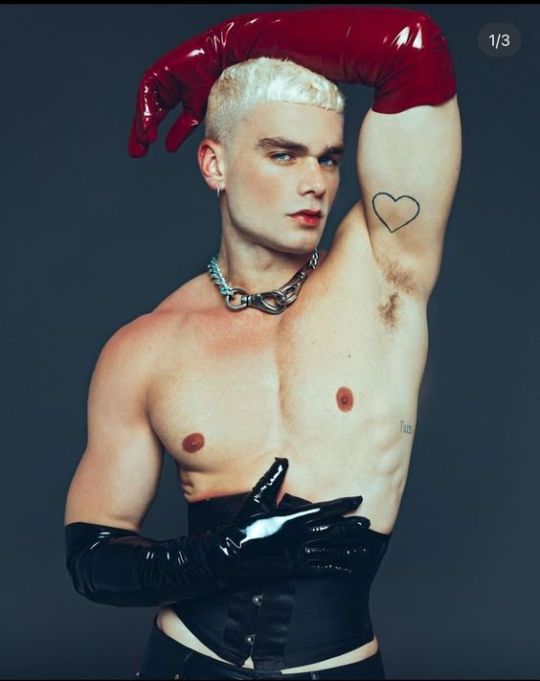
photographer @misaelbelt MISAEL BELT
styling @_marcosmontoya MARCOS MONTOYA
Make up @jowmaquilladora JOWLEEN REYES
Online coordinator @sswango JUAN MARTÍ
model @josdavvo JOS DAVVO
2 notes
·
View notes
Note
Can you do a follower ranking of the f3 grid too?
Sure!
Arthur Leclerc: 358,454 followers
Juan Manuel Correa: 138,867 followers
Francesco Pizzi: 55,661 followers
László Tóth: 54,980 followers
Franco Colapinto: 53,995 followers
David Schumacher: 50,927 followers
Hunter Yeany: 45,508 followers
Caio Collett: 37,076 followers
Roman Stanek: 35,726 followers
Zane Malone: 28,848 followers
Federico Malvestiti: 21,806 followers
Victor Martins: 20,577 followers
Oliver Bearman: 16,639 followers
Jak Crawford: 13,598 followers
Kush Maini: 10,819 followers
David Vidales: 10,281 followers
Zak O'Sullivan: 8,012 followers
Alexander Smolyar: 7,484 followers
Isack Hadjar: 6,809 followers
Rafael Villagómez: 6,219 followers
Nazmin Azman: 5,777 followers
Enzo Trulli: 5,580 followers
Grégoire Saucy: 5,080 followers
Reece Ushijima: 4,714 followers
Brad Benavides: 4,456 followers
Pepe Martí: 4,267 followers
Oliver Rasmussen: 4,060 followers
Kaylen Frederick: 3,577 followers
Ido Cohen: 2,828 followers
William Alatalo: 2,747 followers
#formula 3#listen i saw one of their birthdates is in 2005 and I feel so fucking old????#Arthur Leclerc#Juan Manuel Correa#Francesco Pizzi#László Tóth#Franco Colapinto#David Schumacher#Hunter Yeany#Caio Collett#Roman Stanek#Zane Maloney#Federico Malvestiti#Victor Martins#Oliver Bearman#Jak Crawford#Kush Maini#David Vidales#Zak O'Sullivan#Alexander Smolyar#Isack Hadjar#Rafael Villagómez#Nazmin Azman#Enzo Trulli#Grégoire Saucy#Reece Ushijima#Brad Benavides#Pepe Martí#Oliver Rasmussen#Kaylen Frederick
27 notes
·
View notes
Text
Exposición "Suite: Generis", Colectiva
Exposición Suite: GenerisColectiva14.04.2023Fototeca de CubaLas exposiciones de “fotografía de autor” son eventos artísticos esenciales que desempeñan un papel fundamental en el fomento del talento, la difusión de la cultura y la creación de un espacio para la reflexión y el diálogo. Estas exposiciones representan una oportunidad única para que los fotógrafos muestren su visión personal y…

View On WordPress
#2023#Alberto Chino Arcos#Alejandro Azcuy#Alfredo Sarabio Jr.#Armando Zambrana#Carlos Merino#Daylene Moreno#Ernesto Fernández Nogueras#Fototeca de Cuba#Gabriel Dávalos#Glenda Salazar#Gonzalo Vidal#Harold Vázquez#Humberto Mayol#José Julián Martí#José M. Cervantes#Juan C.Borjas#Julio Larramendi#Leysis Quesada#Lissette Solorzano#Liudmila Velasco#Luna#Muestra Colectiva#Néstor Martí#Neisys González#Nelson Ramírez#Osmel Azcuy#Ossain Raggi#Pedro Abascal#Perfecto Romero
0 notes
Note
What are your favorite books in Spanish?
hi! and sorry that this question has been sitting in my inbox, but that's mostly because I'm ashamed to confess I haven't read Literature in Spanish extensively outside of school. School can do that to you.
Most of the stuff I liked there was poetry; I read Quevedo and Rubén Darío and Martí (if you want a Martí recommendation, Ismaelillo, a book of poems dedicated to his son is quite endearing) and García Lorca, and Bécquer and Neruda and Quevedo and Lope de Vega... you get the gist.
I always particularly hated Neruda. And García Márquez. A lot.
Horacio Quiroga being a national author is someone I read a lot and liked his stuff; the Cuentos de la Selva are very sweet and I like them a lot as stories for children. After reading stories by Edgar Allan Poe this year for a book club (Quiroga is called the Modernist Edgar Allan Poe often in Spanish speaking literary circles), my appreciation for his horror stuff grew, specially his ability to create mood and set up stories in just a few lines. Like how, for example, El Almohadón de Plumas makes set up and mood in two lines:
Su luna de miel fue un largo escalofrío. Rubia, angelical y tímida, el carácter duro de su marido heló sus soñadas niñerías de novia.
Boom! That's what I call economy!
I also read a lot of minor national writers like Serafín J. García (Juan el Zorro) and Juan José Morosoli. Morosoli in particular has a story that fascinates me in its simplicity and hidden meaning, that I do recommend a lot: El Viaje Hacia el Mar. There's even a movie for it!
There are some books I have never fully finished, but they are so important and classic I do always recommend them:
Don Quijote de la Mancha, which I suspect most English speakers do think of as "so Cervantes is the Spanish Shakespeare, ergo, Don Quixote is like reading Shakespeare", but that's mostly true on the humorous side. This novel is mainly affectionate parody of chivalry novels, and some of the scenes are hilarious. It's like the Jane Austen's Northanger Abbey of chivalry novels.
El Gaucho Martín Fierro, because that epic is so classic terms coined in it became part of the slang of Rioplatense Spanish, and also, stuff like this:
"Los hermanos sean unidos
porque esa es la ley primera.
Tengan unión verdadera
en cualquier tiempo que sea,
porque si entre ellos se pelean,
los devoran los de afuera"
El Poema del Cid. I don't think this one needs an explanation.
El Conde Lucanor. This one is less well known, but it is a collection of tales, where the count asks a question, and his adviser Patronio tells him a tale to present his advice. It's just that flavor of Spanish medieval literature.
Speaking of which, for the Catholics I do recommend Gonzalo de Berceo's Loores de Nuestra Señora, which is... basically that, tales of miracles and praise to the Virgin Mary.
Also, for the Catholics, and English speaking Catholics that are proficient in Spanish, I beg you to read St Teresa the Great, anything by her, because she was amazing and grounded and had such a zest and humor, and pretty much every English translation I have picked up turns it down a lot. Like, there's this one in the public domain that is not only horrifically Jesuitical, but it also turns the delightful "entre los pucheros anda el Señor" (the Lord ambles between the stews") into "the Lord goes with you in your duties, even to the kitchen", and considering how little known her absolute spot on description of life as "una mala noche en una mala posada" ("a bad night at a bad b&b") is, I fear it might have suffered a similar fate. But I think the matter of translating St Teresa should go into another post XD
So... what else? There must be more stuff, literature wise, but I'm blanking now.
When it comes to philosophy I also haven't read that much. I did read and found SUPER interesting Ortega y Gasset's Ideas y Creencias, in the way it highlights the closeness between scientific discovery and fantastic imagination. It was an eye opener.
Something I read last year, which is a classic of Uruguayan essay, is José Enrique Rodó's Ariel. It's an address to the youth of the Americas and I think it is very representative of the spirit of its time, some things are applicable today more than they were back in the day.
But the philosopher I have read the most in Spanish is Carlos Vaz Ferreira. Vaz Ferreira is a peculiar guy, because while most of his stuff isn't like, NEW or GROUNDBREAKING, his approach to philosophy in analytical ways that recognize the limitations of human thinking without despair is VERY refreshing, specially in terms of what is the late 1800s and early 1900s.
And this is all my brain is willing to provide today. I'm sorry I couldn't be more specific and varied in my response :(
4 notes
·
View notes
Text
Tal día como hoy 6 de octubre ...
2010: Se lanza en Internet la red social Instagram, en la actualidad propiedad de la empresa Facebook.
2007: El británico Jason Lewis llega a Londres, completando por primera vez la vuelta al mundo utilizando vehículos propulsados con fuerza humana, utilizó una pequeña embarcación a pedales y bicicletas en tierra. Comenzó el 12 de julio de 1994.
1995: Se descubre el primer planeta extrasolar, orbitando la estrella 51 Pegasi.
1990: Desde el transbordador espacial Discovery se lanza la sonda Ulysses cuya misión es la de estudiar el Sol en todas sus latitudes. Un proyecto conjunto de la NASA y la ESA.
1979: El papa Juan Pablo II visita la Casa Blanca siendo presidente de Estados Unidos Jimmy Carter, convirtiéndose en el primer pontífice en hacerlo.
1977: En la Unión Soviética, el avión Mikoyan MiG-29 realiza su primer vuelo de pruebas.
1948: Ocurre un terremoto de magnitud 7,3 en la escala de Richter en Ashgabat, Turkmenistán (antigua Unión Soviética), causando la muerte a más de 150.000 personas y graves daños materiales.
1927: Se estrena la primera película de cine sonoro de la historia: “El cantante de jazz”, en Nueva York (Estados Unidos).
1891: Se publican por primera vez “Los Versos sencillos”, en Nueva York, del poeta y político cubano José Martí.
1889: El inventor estadounidense Thomas Edison presenta el kinetoscopio, considerado el primer proyector de cine, en el que solo un espectador podía disfrutar de la experiencia.

(El inventor estadounidense Thomas Edison presenta el kinetoscopio)
4 notes
·
View notes
Text
who i write for: formula 2 edition
< back to the master post
#3 ollie bearman
#7 jak crawford
#8 juan manuel correa
#11 dennis hauger
#17 paul aron
#21 josep (pepe) maría martí
#22 richard verschoor
1 note
·
View note
Text
Antonia Sala Martí (1850- 19..?)
Aún estaba activa en 1878.
Nació en Barcelona. Pintora de retratos y de género. Es una artista apenas conocida.
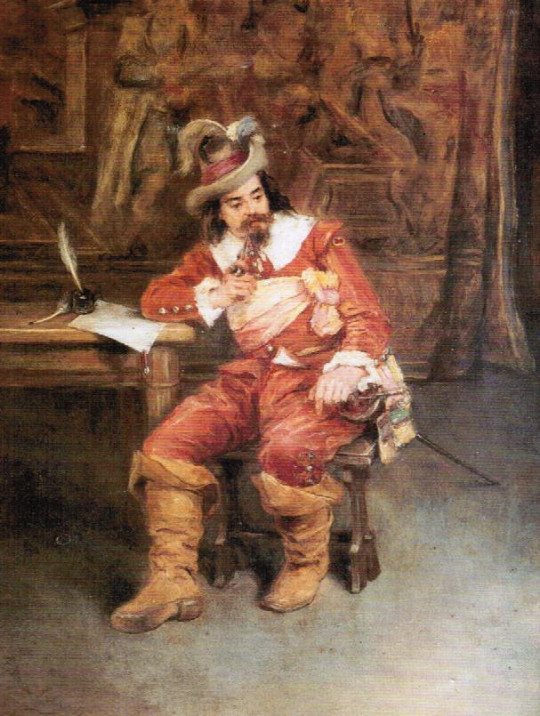
Hasta la fecha nos han llegado únicamente los datos aportados en el ya obsoleto diccionario de Ossorio.
Aparte de ser discípula de José Robles Martínez y de Alejandro Ferrant, perfeccionó su aprendizaje en 1869 en el Museo del Prado.
Aparece en el Libro de copistas del museo del Prado, 8 de abril de 1869, constando como garante su padre.
Se dio a conocer en la Exposición Nacional de Bellas Artes de 1871 con los cuadros Retrato del Duque de Castillejos, Retrato de Isabel Prim y Agüero (Hija de Juan Prim y Prats), Una vendedora de frutas y Lutero escribiendo la reforma.

Parece ser que no volvió a exponer hasta siete años después, cuando en 1878, participó en la Exposición Universal de París de 1878 con Scène dans un cabaret au XV siècle, también llamado “Los soldados ebrios” que obtuvo elogiosas críticas en el periódico francés Gazette des Touristes.
Residía entonces en la madrileña calle de Jacometrazo, 17 .
Murió en Madrid.
0 notes
